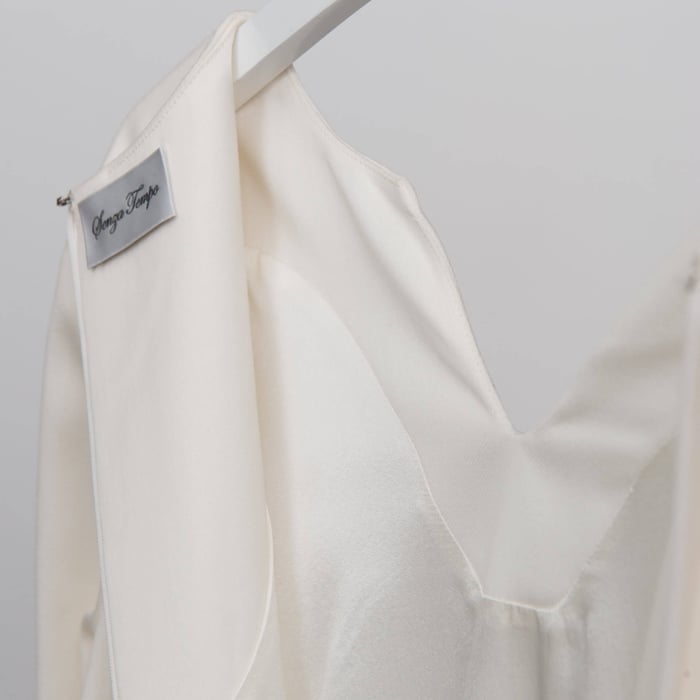Using silk is a detail that is as luxurious as it is practical. Creating a superior garment starts with the fabric. We use only the finest imported silks, wools and cottons. The US has never had a silk industry, it was produced erratically in the Carolinas, Connecticut, Virginia and other colonies in the early 1600s, but all experiments failed fairly quickly or produced very little. Eliza Pickney of Charleston managed to make enough for a single dress which now resides in the Museum of American History.
Sericulture, or silk production, is one of the oldest means of fabric production in history – originating in China around 2,700 B.C. It is a lengthy process that demands constant close attention. To produce high quality silk, there are two conditions which must be accomplished – preventing the moth from hatching out and perfecting the diet on which the silkworms should feed. The Chinese developed secret techniques for both, which has become the foundation for silk production across the globe.
Most clothing brands don’t give much thought to the lining of their garments, after all no one sees the lining and the added cost of using a natural fabric like silk is likely deemed not worth it. The lining of a garment greatly improves the fit by creating a more streamlined silhouette. It also reduces tension on the outer fabric keeping it from stretching out. In general, silk is less likely to crease than other fabrics. Our garments are lined with 100% silk habotai or an ultra-luxurious stretch silk charmeuse — a common detail in very high end and couture clothing, but not ready-to-wear.
We use silk because it makes a garment more versatile and seasonless — which is crucial to buying less and creating a more sustainable closet. Silk is breathable and adjusts to your body temperature — it cools you in the summer and warms you in the winter. Garments lined in acetate or other polyesters is like lining a garment in plastic.
When it comes to sustainability, silk is inherently more sustainable than many other fibers due to how it’s created and processed. It requires far fewer pesticides than growing conventional cotton. The chemical treatments needed to create a woven textile are a low level pollutant if released untreated and significantly lower than what is required to create a synthetic or cotton.
Silk also is one of the strongest materials and why we chose to make our Marilyn tees out of silk jersey instead of cotton. The founder was frustrated by her cotton tees getting holes in them after a few wears. Silk has the tensile strength of steel. It's strong, practical and luxurious — everything you should expect out of your clothing.


